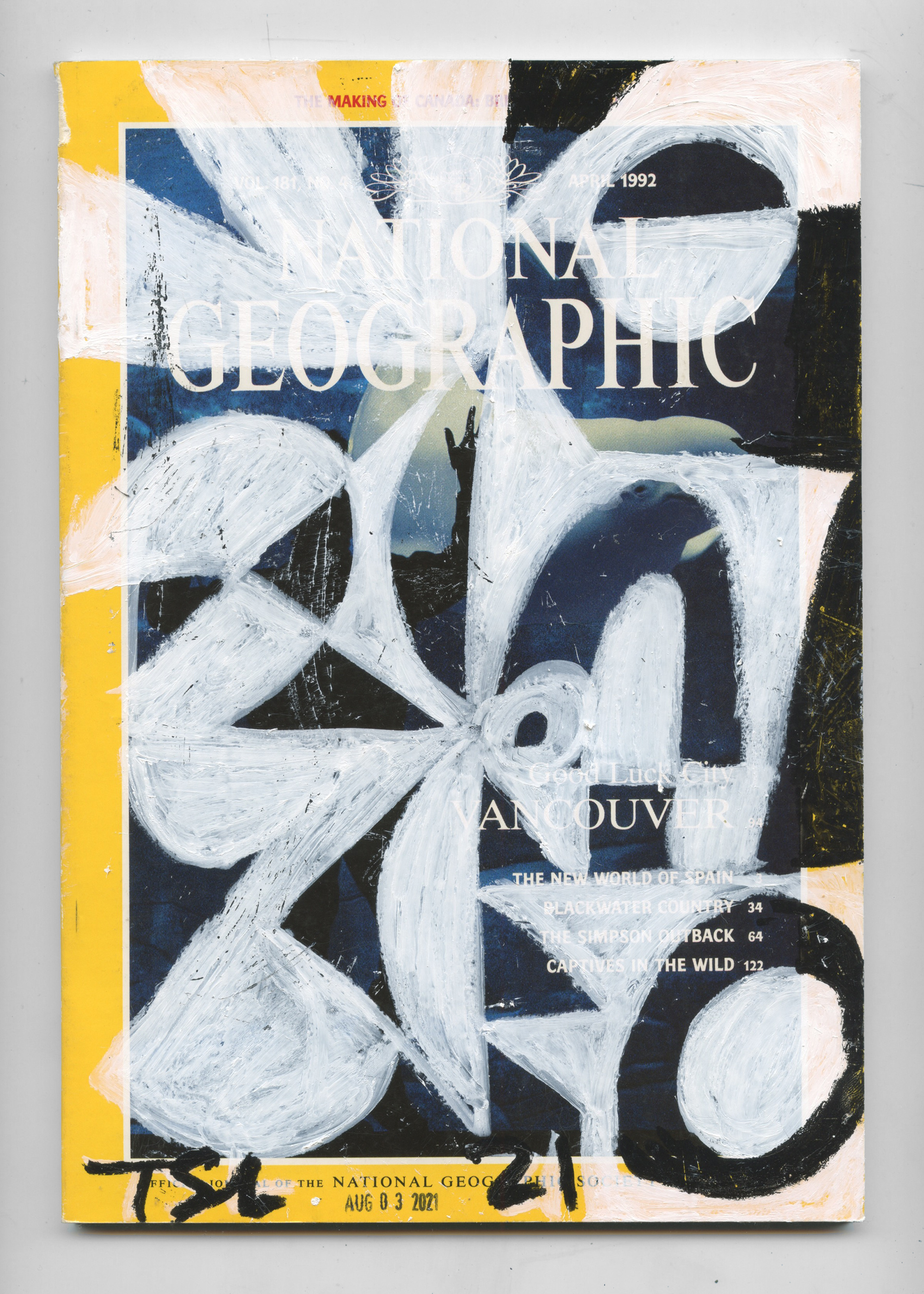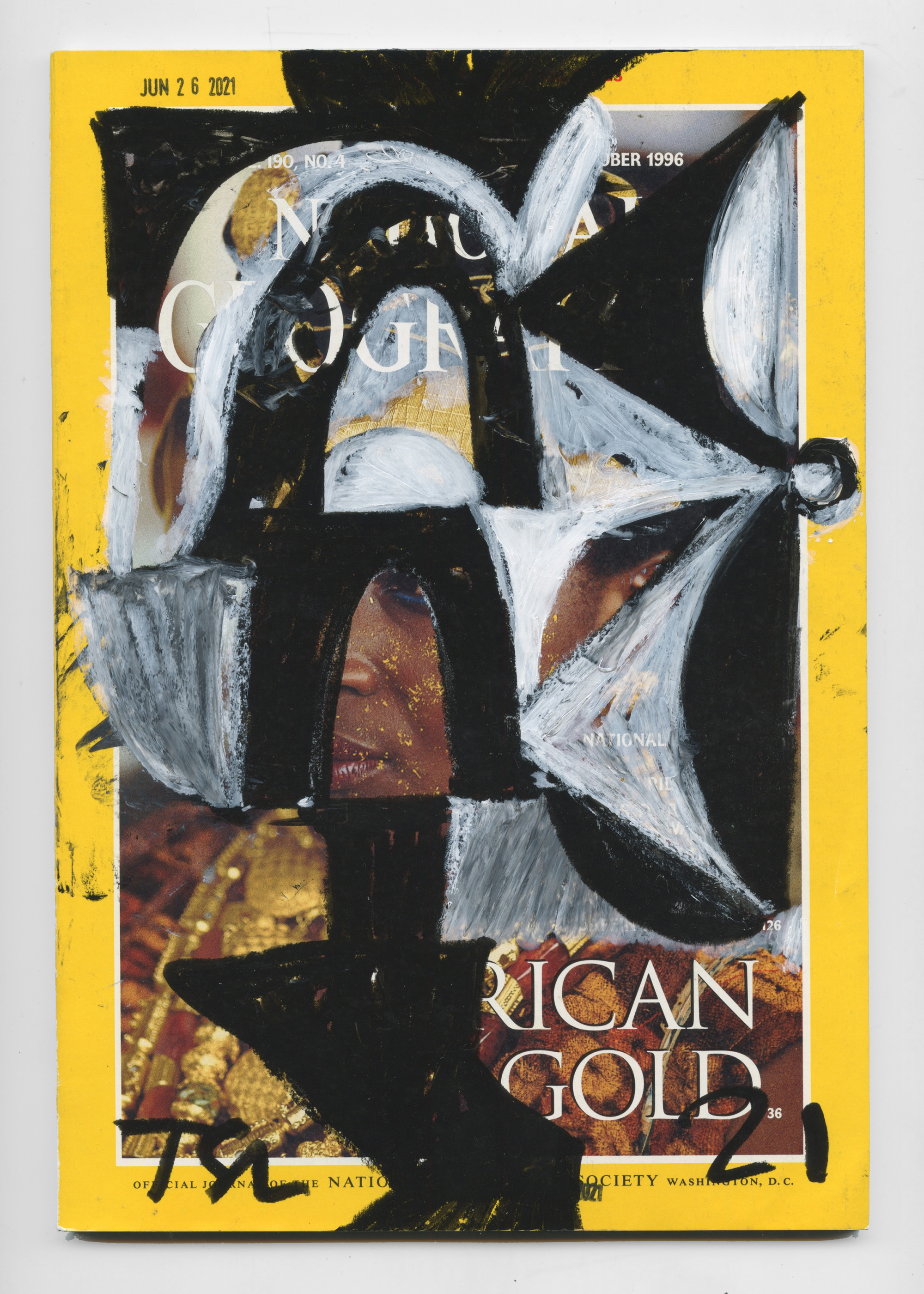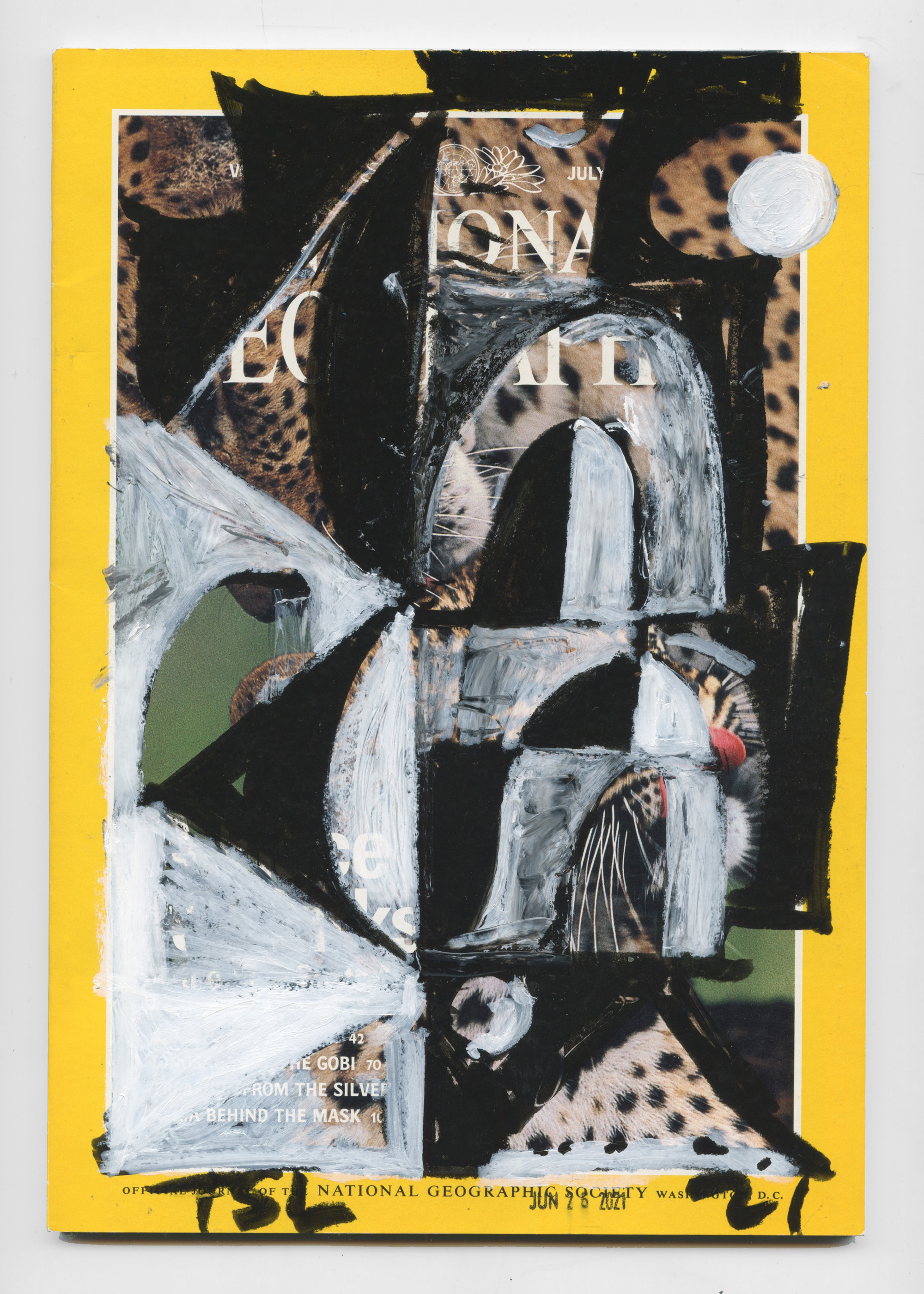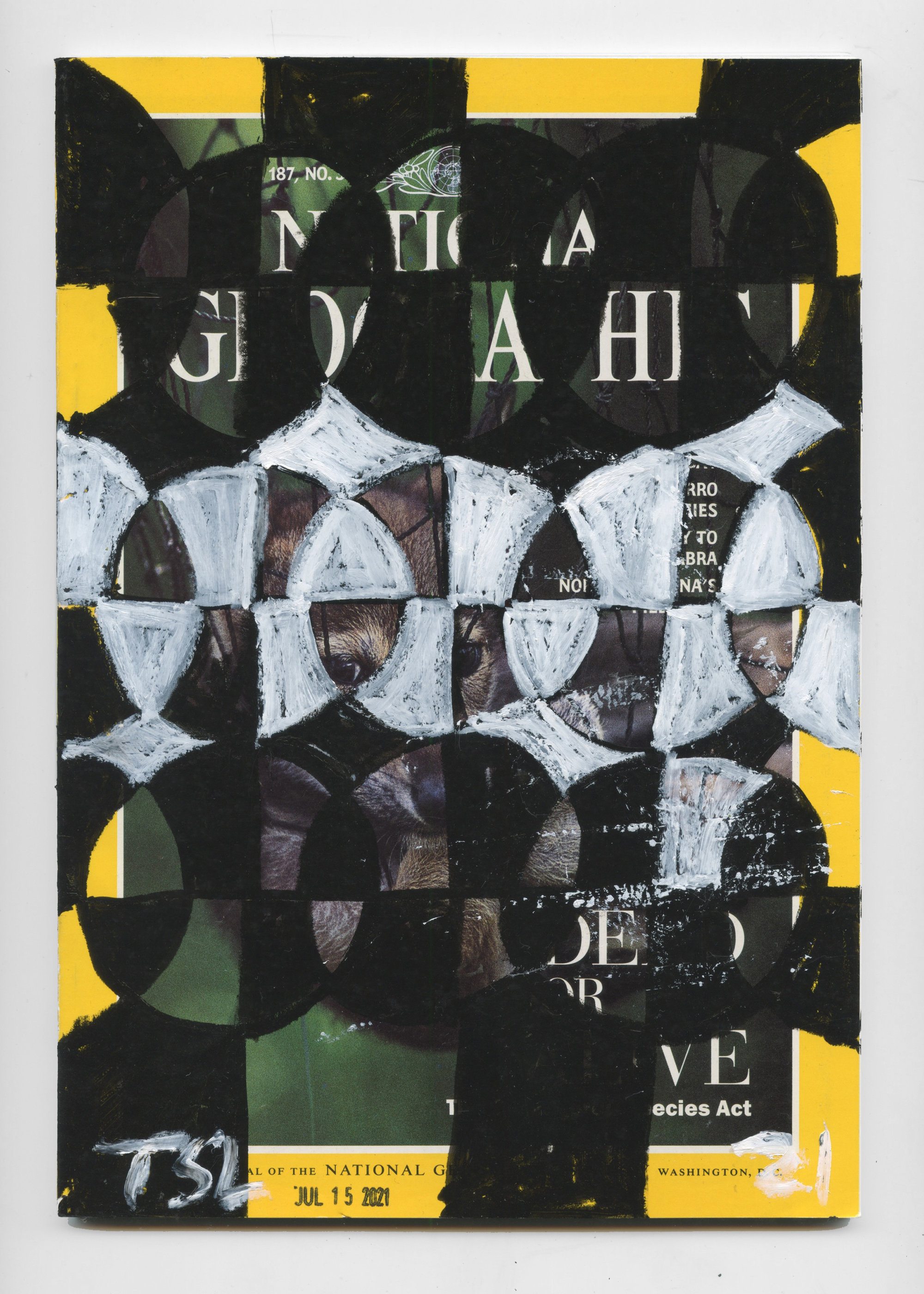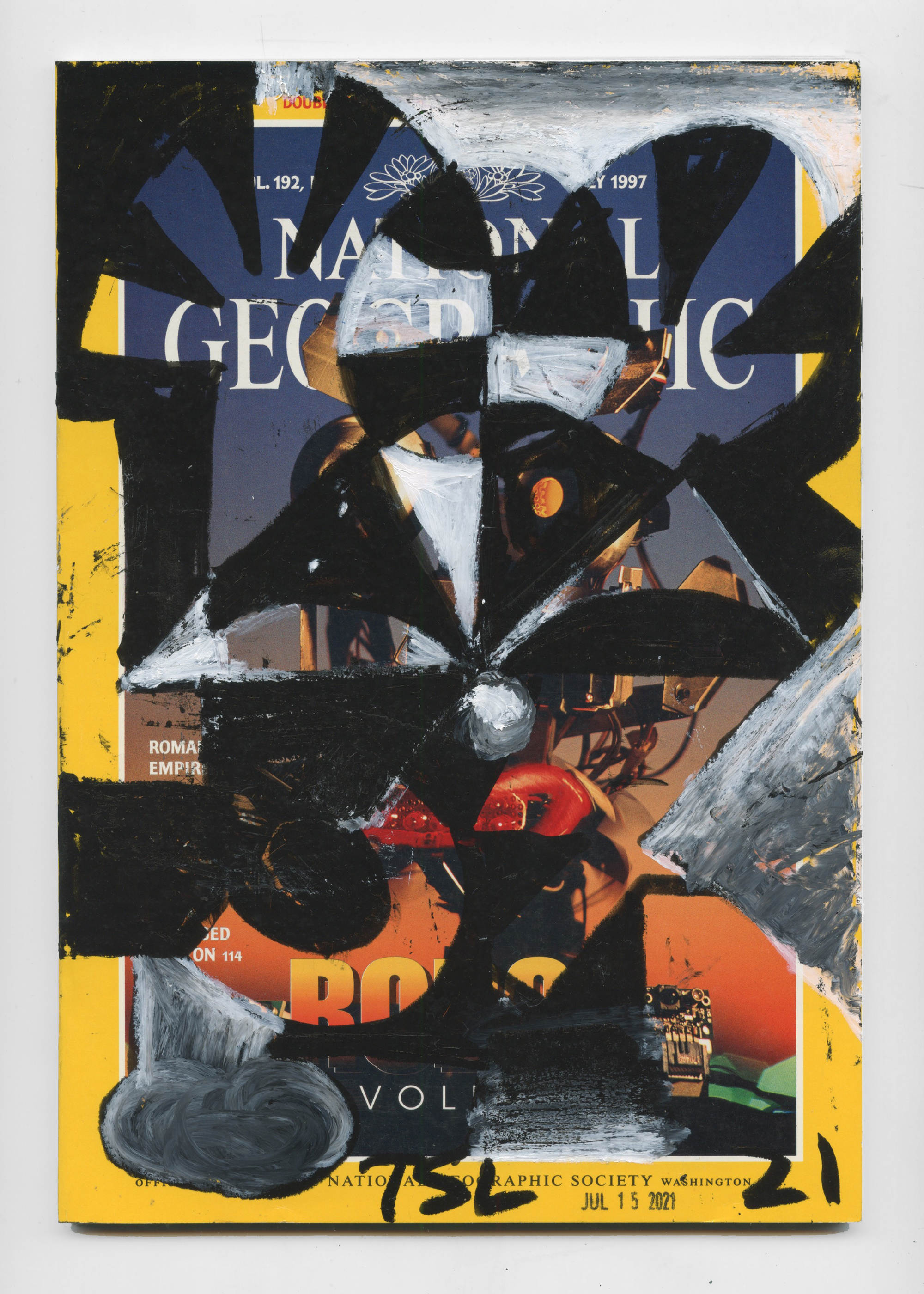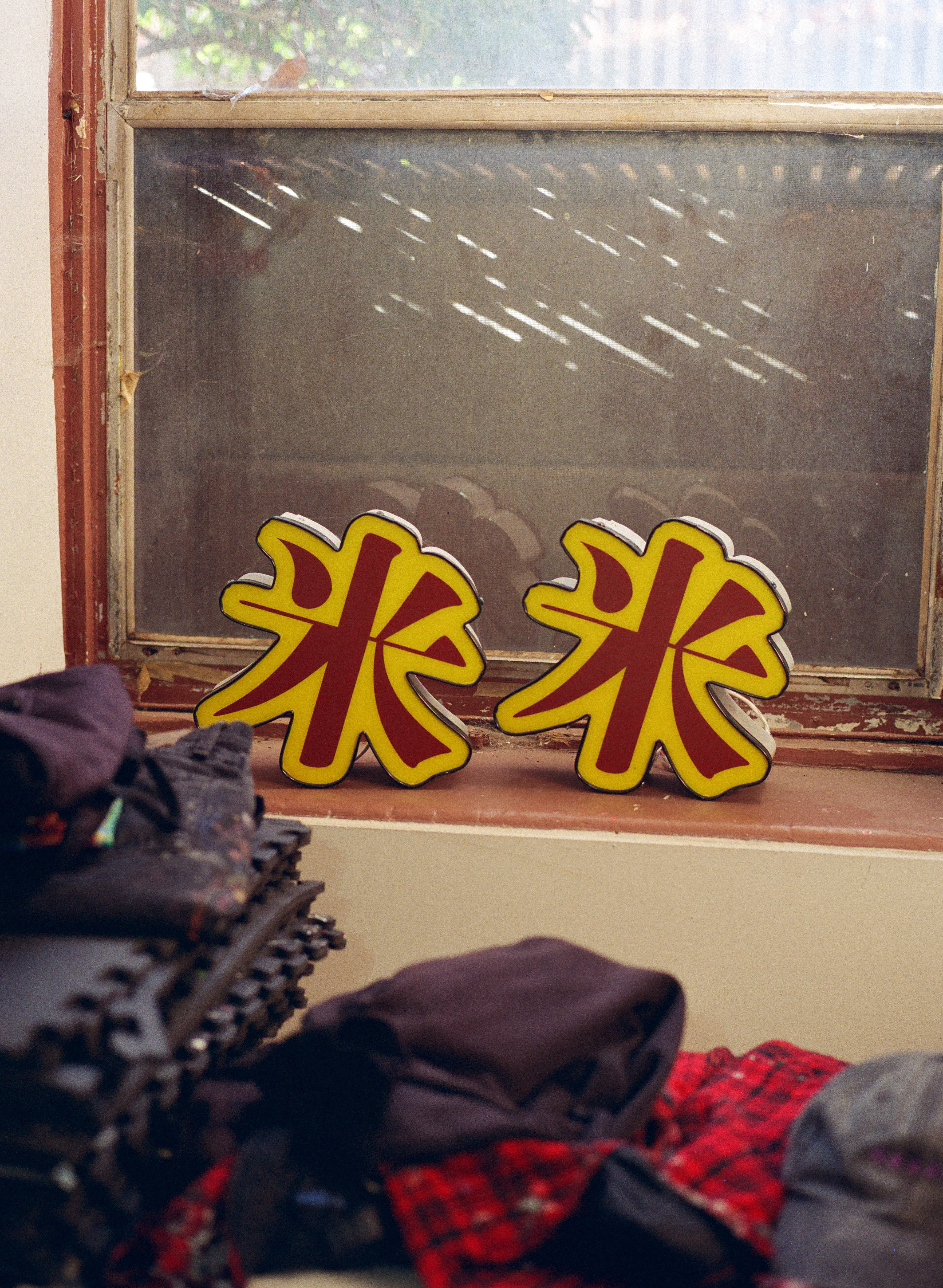



Lo’s work explores traditional themes from his Asian heritage, while juxtaposing symbols from pop culture old and new, experimental techniques, and mixed media. Within his approach lies deeply woven themes of self discovery and a questioning of both his own existence and the human condition. Introspection aside, his work can be described as bright, playful, humourous and youthful.
We met up with him at his Chinatown studio to discuss process, art as a lifestyle, and “identifying” as a painter.
We ended up talking for almost 6 hours.

PALINDROME - How was the move from Jakarta? Do you feel it’s absence has had an influence on your work?
TESSAR LO - My dad had a high school friend in Guelph at the time. We landed in Canada in February, and one of my first memories was being struck by the snow. It was shocking. There’s probably something about that experience that’s not exactly culture shock, but sits with you. I was almost literally taken from a nice, warm incubator and put out in the cold. There’s definitely an element of shock that’s tied to that experience of moving, especially if the environments are drastically different. Thankfully I was young and adapted quickly. Snow becomes fun.
Recently I realised a lot of my work and the motivation behind it has to do with an experience of cultural dissonance. By blood I’m mostly Chinese and Indonesian, and growing up we were culturally about equal parts Chinese and Indonesian. But then I grew up here, so I’m Canadian, I grew up watching YTV and Ninja Turtles. I feel equally at home with all of these things, but also not entirely. I continue to feel as though my work can’t directly address those cultural things with any sort of specific grasp because even as an adult, I feel a big part of me will always be floating. I have a family now so that feeling has shifted a bit, but I don’t think it will ever fully leave me. Family is probably the closest I can feel to home, but outside of that I don’t feel comfortably anchored.
P - Are there any early memories of Jakarta that have stuck with you?
TL - I was only 4 when we left, so what I remember of Jakarta are only in small glimpses- memories of walking to school, a kid throwing up in my class, random parts of the home we lived in. Most of what I really knew about the place came from stories I’d heard growing up, about our hometown, communities of people there, our ancestors. And many of those stories start to blend with memories, so I sometimes find it hard to make clear distinctions. Many of those stories stuck with me because they contain a sort of supernatural element, the type of things that scared me as a kid and have continued to remain with me.
P - And have you been back?
TL - I was able to go back a couple times as a kid, once when I was 7 and again when I was 10. Then I didn’t go back until I was 28. When I went back I was able to go alone. Between that time I was just rehashing a lot of these memories and stories, and then when I went back, I went with the intention of seeing for myself, some of the things I’d heard about and could now experience on my own. I spent about 3 months or so between several cities and towns in Indonesia and Singapore, trying to just be open to a familiar feeling all the while making drawings that I’d carried around with me. I was really interested in the spirit of these places and wondered who I would be if my family had stayed.
TESSAR LO - My dad had a high school friend in Guelph at the time. We landed in Canada in February, and one of my first memories was being struck by the snow. It was shocking. There’s probably something about that experience that’s not exactly culture shock, but sits with you. I was almost literally taken from a nice, warm incubator and put out in the cold. There’s definitely an element of shock that’s tied to that experience of moving, especially if the environments are drastically different. Thankfully I was young and adapted quickly. Snow becomes fun.
Recently I realised a lot of my work and the motivation behind it has to do with an experience of cultural dissonance. By blood I’m mostly Chinese and Indonesian, and growing up we were culturally about equal parts Chinese and Indonesian. But then I grew up here, so I’m Canadian, I grew up watching YTV and Ninja Turtles. I feel equally at home with all of these things, but also not entirely. I continue to feel as though my work can’t directly address those cultural things with any sort of specific grasp because even as an adult, I feel a big part of me will always be floating. I have a family now so that feeling has shifted a bit, but I don’t think it will ever fully leave me. Family is probably the closest I can feel to home, but outside of that I don’t feel comfortably anchored.
P - Are there any early memories of Jakarta that have stuck with you?
TL - I was only 4 when we left, so what I remember of Jakarta are only in small glimpses- memories of walking to school, a kid throwing up in my class, random parts of the home we lived in. Most of what I really knew about the place came from stories I’d heard growing up, about our hometown, communities of people there, our ancestors. And many of those stories start to blend with memories, so I sometimes find it hard to make clear distinctions. Many of those stories stuck with me because they contain a sort of supernatural element, the type of things that scared me as a kid and have continued to remain with me.
P - And have you been back?
TL - I was able to go back a couple times as a kid, once when I was 7 and again when I was 10. Then I didn’t go back until I was 28. When I went back I was able to go alone. Between that time I was just rehashing a lot of these memories and stories, and then when I went back, I went with the intention of seeing for myself, some of the things I’d heard about and could now experience on my own. I spent about 3 months or so between several cities and towns in Indonesia and Singapore, trying to just be open to a familiar feeling all the while making drawings that I’d carried around with me. I was really interested in the spirit of these places and wondered who I would be if my family had stayed.

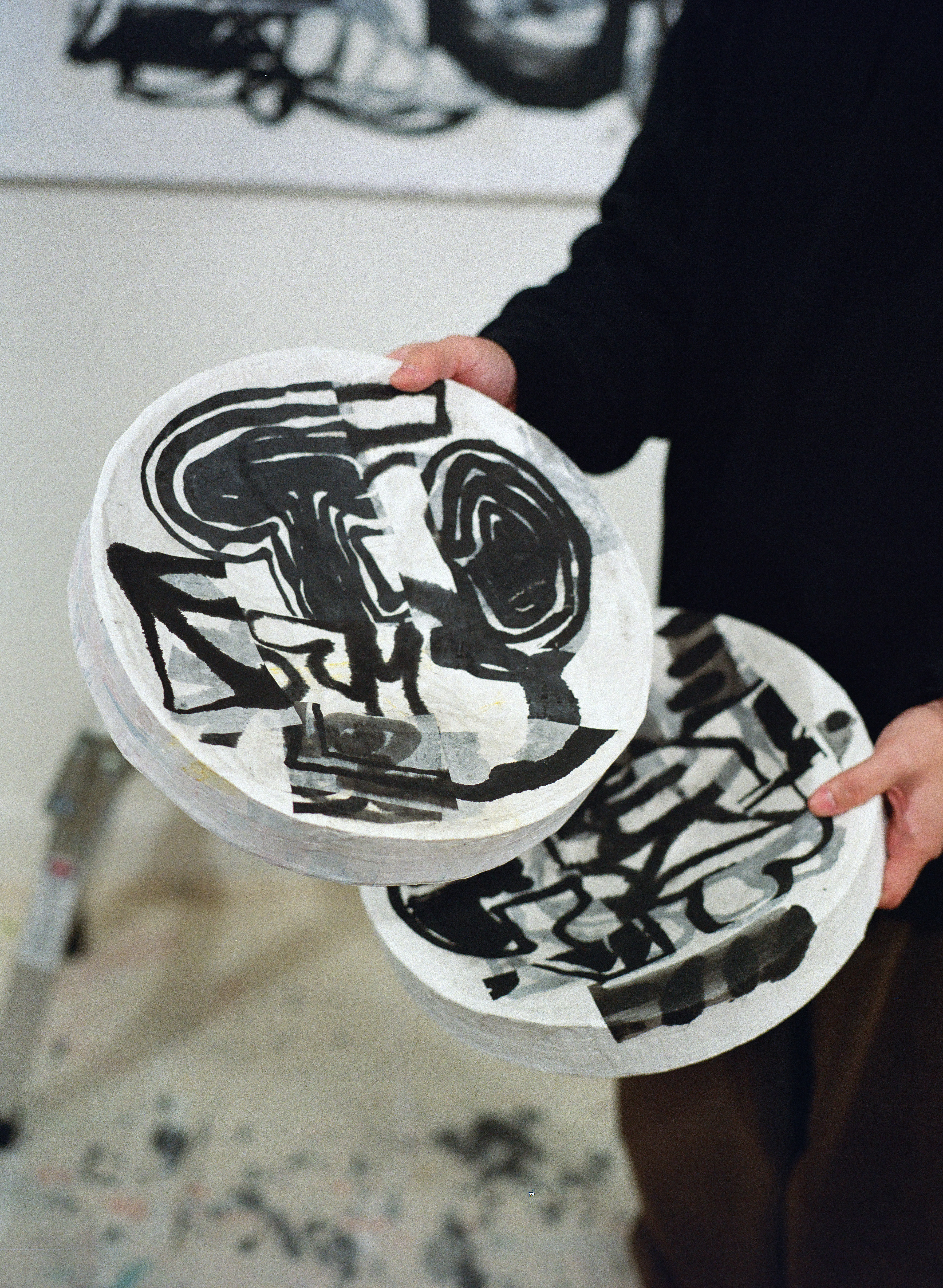
P - What lead to you becoming an Artist?
TL - I always liked drawing as a kid. I remember drawing daggers for boys and dolls for girls in kindergarten, probably because at the time it was the only way I could communicate. When I was 10 I had a family friend who would draw X-MEN. Comic books became the first artworks I remember being consciously enamoured with. I thought these mutants were so cool and wanted to draw them too, that’s probably the first time I had any real intention to make something with purpose. Then in Grade 7, my homeroom teacher kept me after class and asked if I had considered where I’d go for high school and suggested Cardinal Carter Academy for the Arts.
I applied, did the portfolio process, got in, and all of a sudden I’m in an art world. Now I’m 14 and I’m doing regular high school with a concentrated art curriculum that involved a focus on art history and encouraged multidisciplinary making. Toward my senior year, a Sheridan Alum came back to the school and gave a talk about Sheridan. I felt at the time that that was a reasonable option for me to take.
P - Did you always have an interest in painting?
TL - I have always loved painting. I painted throughout high school and college, but by the time I graduated college I fully believed I was going to be an Illustrator. My focus at the time was on how to do this visual communication thing for a living. Fortunately or unfortunately, at that time I proved to not work so well with art directors and found myself making more and more of my own work.
![]()
![]()
P - So, do you consider yourself a painter?
TL - I can’t think of a clear-cut distinction when or where I Became A Painter. It’s what just happened. I was a terrible illustrator, I was incapable of delivering on promises. I would send in roughs and my finals would look completely different. I wasn’t ready for it at the time. I was just slightly more interested in trying my own things. I guess now I identify as a painter- I love painting and the unknowable histories of it. I think images, objects, and materials are powerful. There’s also a lot I do that isn’t painting and not exhibited or formally presented, but they remain a big part of my being and my learning. Generally, I think of all art as a constant that at its best is beyond clear definition- it’s as much about actively absorbing all the things as it is the object/tangible result of time spent creating.
P - How would you describe the themes in your work?
TL - I tend to be drawn to time, humour (of the preposterous kind), and mystery. Mystery can be a really corny word, but maybe that’s part of why I like it. I like the idea of mystery as it relates to discovery. It’s important for me to be comfortable in the feeling of not knowing. Art is unlike other things in that it can exist in a way that allows room for things to be unspecified. It so coincidentally happens to be how I think we experience/ go through this life.
![]()
![]()
P - What inspired you to paint in this style?
TL - My work is not motivated by style, but by a curiosity about how I can experience my favourite conversations in as many ways as possible. I don’t believe in purposefully aiming for a style. How my work appears should come as a natural end of my hand and the formal and conceptual motivations. I prefer that instead of my work to be driven by style, that it’s more driven by possibility. I love and believe in painting so much that I want to learn and know what it can be for me as much as possible, in my own time. I’m still trying to learn about painting and what a painting can do for me.
P - Is self discovery a big part of the work? Is there a plan when you start a new work?
TL - I spend a lot of time thinking about painting as a conversation. If I’m talking at someone for 2 hours, it’s not a productive or pleasant experience for anyone. I try to remember that when I’m painting. I could just do a thing and dictate what does or doesn’t work, but then I feel like I’m lecturing to the work. Instead I ought to be curious about what can result from a give and take. That doesn’t really exist if I’m not open and listening to what I’m working on.
I think that this approach can be tricky though. As a person you are constantly in flux, learning and absorbing new things all the time. Who I am in the morning and who I am by the evening are sometimes different people. An interest or curiosity can come up that suddenly can’t not be part of the conversation. This can be a bit troublesome to the process.
Like I said, there are certain things I tend to naturally fixate on and that at least thematically, can be the starting point. I’m learning though, more and more- that especially with some notions as big as time, in certain instances it's less productive to converse and better to just listen.
TL - I always liked drawing as a kid. I remember drawing daggers for boys and dolls for girls in kindergarten, probably because at the time it was the only way I could communicate. When I was 10 I had a family friend who would draw X-MEN. Comic books became the first artworks I remember being consciously enamoured with. I thought these mutants were so cool and wanted to draw them too, that’s probably the first time I had any real intention to make something with purpose. Then in Grade 7, my homeroom teacher kept me after class and asked if I had considered where I’d go for high school and suggested Cardinal Carter Academy for the Arts.
I applied, did the portfolio process, got in, and all of a sudden I’m in an art world. Now I’m 14 and I’m doing regular high school with a concentrated art curriculum that involved a focus on art history and encouraged multidisciplinary making. Toward my senior year, a Sheridan Alum came back to the school and gave a talk about Sheridan. I felt at the time that that was a reasonable option for me to take.
P - Did you always have an interest in painting?
TL - I have always loved painting. I painted throughout high school and college, but by the time I graduated college I fully believed I was going to be an Illustrator. My focus at the time was on how to do this visual communication thing for a living. Fortunately or unfortunately, at that time I proved to not work so well with art directors and found myself making more and more of my own work.
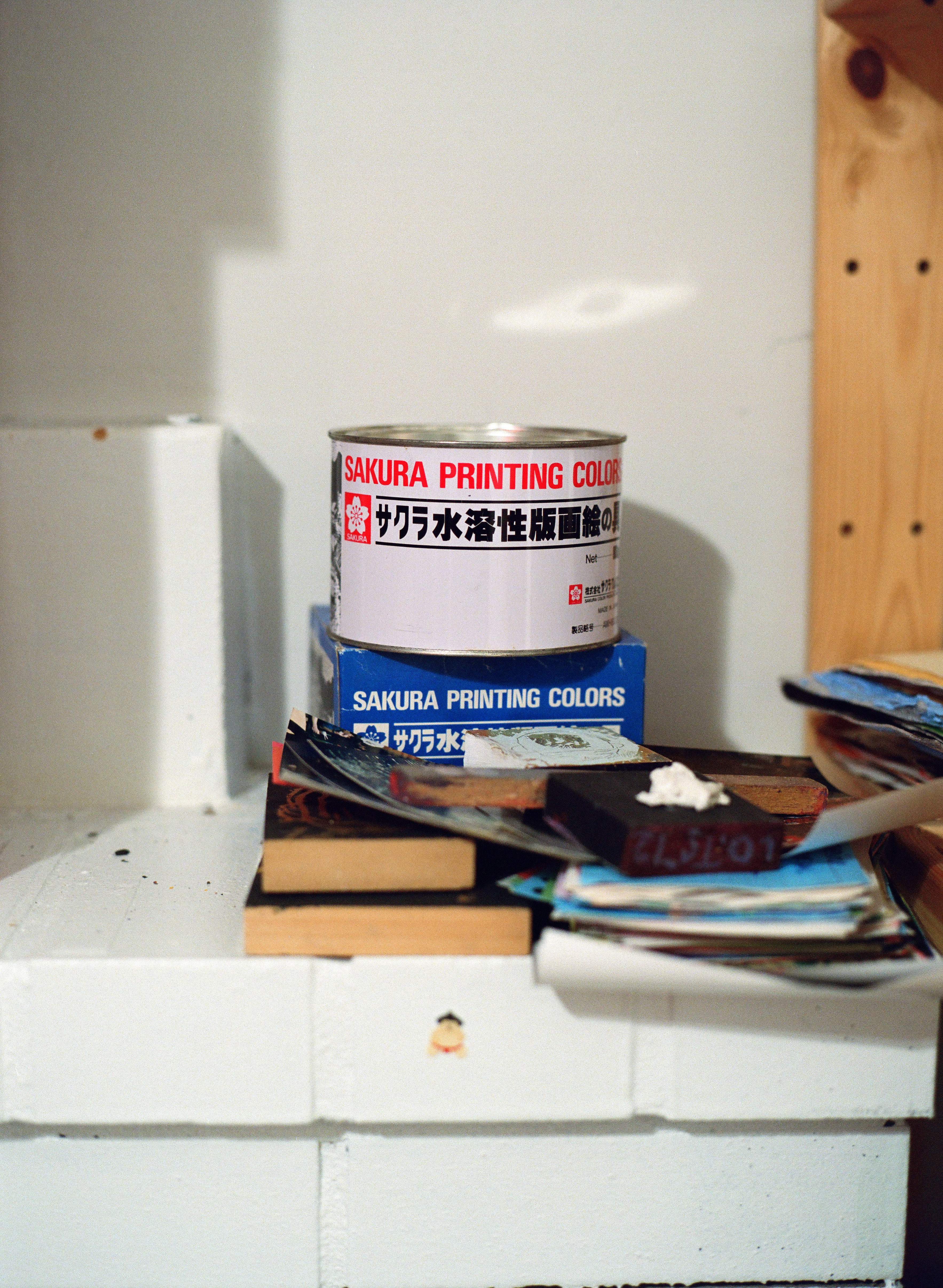
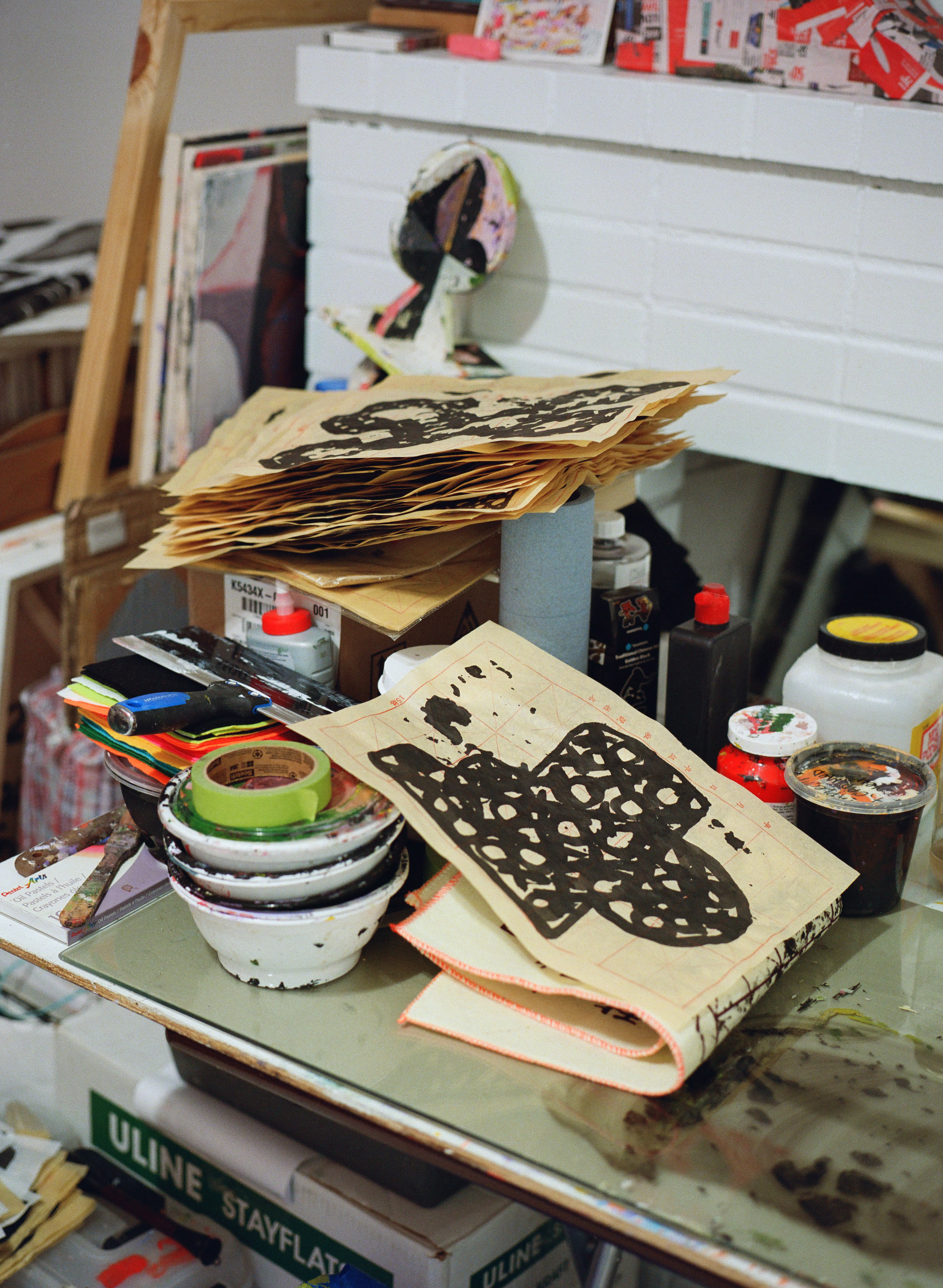
P - So, do you consider yourself a painter?
TL - I can’t think of a clear-cut distinction when or where I Became A Painter. It’s what just happened. I was a terrible illustrator, I was incapable of delivering on promises. I would send in roughs and my finals would look completely different. I wasn’t ready for it at the time. I was just slightly more interested in trying my own things. I guess now I identify as a painter- I love painting and the unknowable histories of it. I think images, objects, and materials are powerful. There’s also a lot I do that isn’t painting and not exhibited or formally presented, but they remain a big part of my being and my learning. Generally, I think of all art as a constant that at its best is beyond clear definition- it’s as much about actively absorbing all the things as it is the object/tangible result of time spent creating.
P - How would you describe the themes in your work?
TL - I tend to be drawn to time, humour (of the preposterous kind), and mystery. Mystery can be a really corny word, but maybe that’s part of why I like it. I like the idea of mystery as it relates to discovery. It’s important for me to be comfortable in the feeling of not knowing. Art is unlike other things in that it can exist in a way that allows room for things to be unspecified. It so coincidentally happens to be how I think we experience/ go through this life.

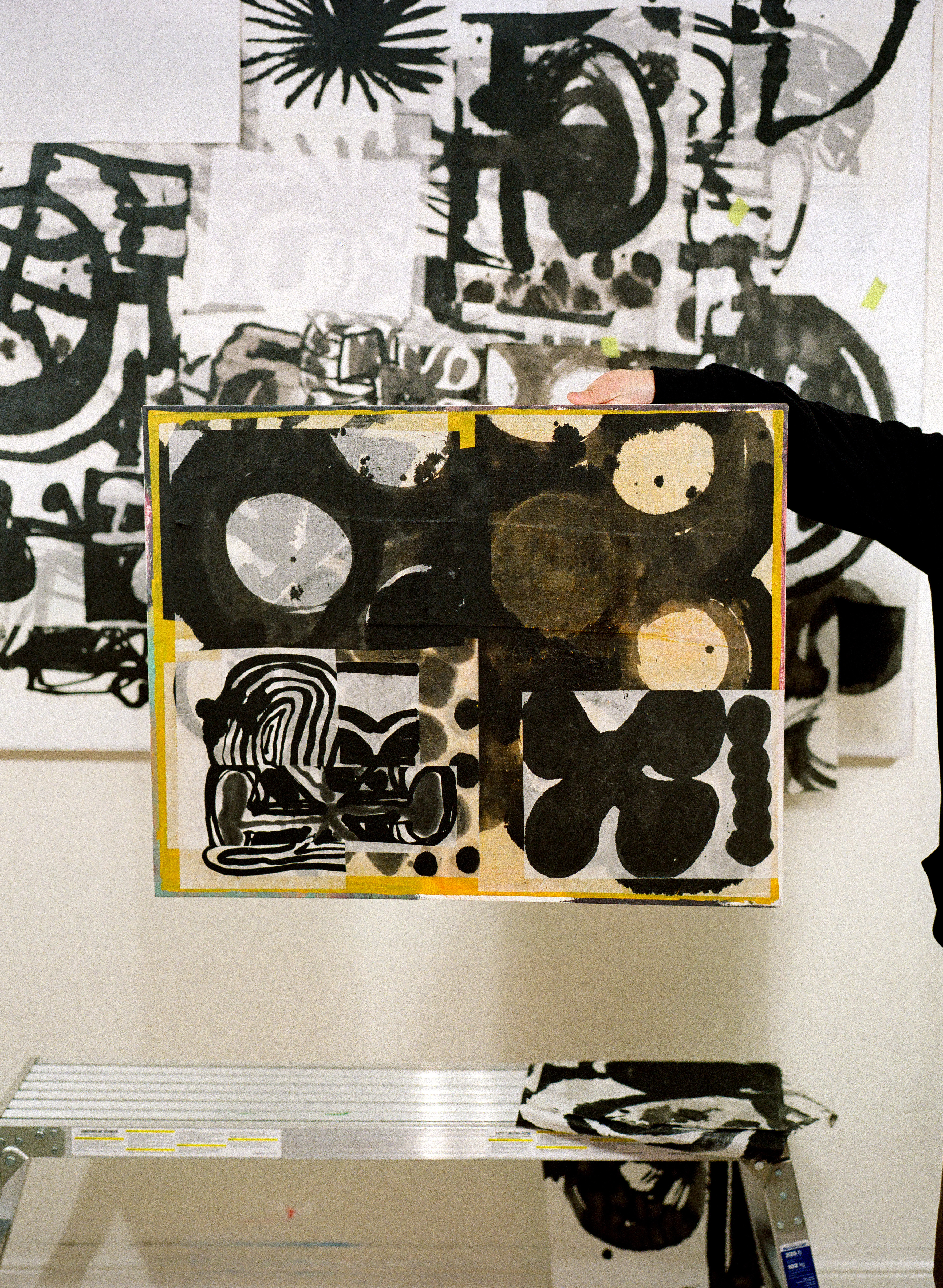
P - What inspired you to paint in this style?
TL - My work is not motivated by style, but by a curiosity about how I can experience my favourite conversations in as many ways as possible. I don’t believe in purposefully aiming for a style. How my work appears should come as a natural end of my hand and the formal and conceptual motivations. I prefer that instead of my work to be driven by style, that it’s more driven by possibility. I love and believe in painting so much that I want to learn and know what it can be for me as much as possible, in my own time. I’m still trying to learn about painting and what a painting can do for me.
P - Is self discovery a big part of the work? Is there a plan when you start a new work?
TL - I spend a lot of time thinking about painting as a conversation. If I’m talking at someone for 2 hours, it’s not a productive or pleasant experience for anyone. I try to remember that when I’m painting. I could just do a thing and dictate what does or doesn’t work, but then I feel like I’m lecturing to the work. Instead I ought to be curious about what can result from a give and take. That doesn’t really exist if I’m not open and listening to what I’m working on.
I think that this approach can be tricky though. As a person you are constantly in flux, learning and absorbing new things all the time. Who I am in the morning and who I am by the evening are sometimes different people. An interest or curiosity can come up that suddenly can’t not be part of the conversation. This can be a bit troublesome to the process.
Like I said, there are certain things I tend to naturally fixate on and that at least thematically, can be the starting point. I’m learning though, more and more- that especially with some notions as big as time, in certain instances it's less productive to converse and better to just listen.
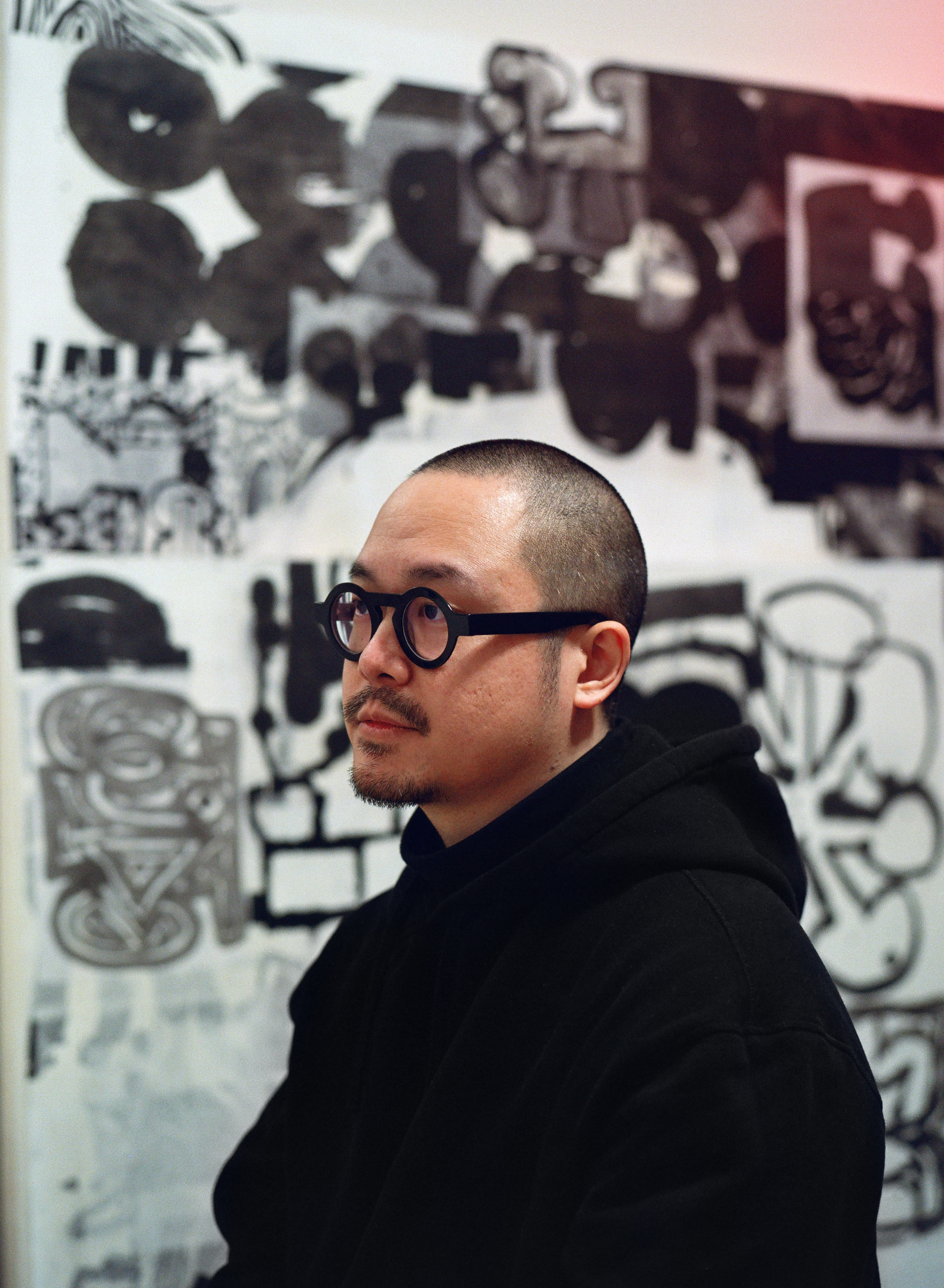

P - Was it difficult to find a start painting in this style? Do you feel at odds with the perception that time invested equals value?
TL - I think it’s still difficult at times. Oddly enough I love wrestling with time, but there’s a strange equation between quality and time that is generally accepted that I’ve come to disagree with. I’ve experienced enough instances of people asking, how much time did this take you? Or I occasionally overhear someone say, wow look at this painting it took 100 hours to make. There’s a correlation between time invested and quality/value. I used to fight against that, but I don’t anymore because I do believe good work does need time.
How I see it now though, is that making a thing needs time not only in the labour or the execution, but also time in your being as a person around the work. If you take an artist that spends 90 hours on a painting but fucks off for the rest of their week, is that better than the artist who makes their work in an hour, but visualizes and revisits that hour before and after the doing throughout that same week? The answer is different for everyone, but I choose to see that my time spent making a thing is not strictly within the boundaries of execution. There are certain things that take me a few seconds, but I’ll be thinking about those few seconds before and after for weeks at a time. I’m not interested in having to convince anyone whether or not the quality of a work rests on time invested. It’s not my job to explain to people what they don’t understand. Having said that, it did take me a while to get to this place. Earlier days I was a lot more defensive about this subject because I didn’t have a holistic understanding of my relationship to my work.
TL - I think it’s still difficult at times. Oddly enough I love wrestling with time, but there’s a strange equation between quality and time that is generally accepted that I’ve come to disagree with. I’ve experienced enough instances of people asking, how much time did this take you? Or I occasionally overhear someone say, wow look at this painting it took 100 hours to make. There’s a correlation between time invested and quality/value. I used to fight against that, but I don’t anymore because I do believe good work does need time.
How I see it now though, is that making a thing needs time not only in the labour or the execution, but also time in your being as a person around the work. If you take an artist that spends 90 hours on a painting but fucks off for the rest of their week, is that better than the artist who makes their work in an hour, but visualizes and revisits that hour before and after the doing throughout that same week? The answer is different for everyone, but I choose to see that my time spent making a thing is not strictly within the boundaries of execution. There are certain things that take me a few seconds, but I’ll be thinking about those few seconds before and after for weeks at a time. I’m not interested in having to convince anyone whether or not the quality of a work rests on time invested. It’s not my job to explain to people what they don’t understand. Having said that, it did take me a while to get to this place. Earlier days I was a lot more defensive about this subject because I didn’t have a holistic understanding of my relationship to my work.
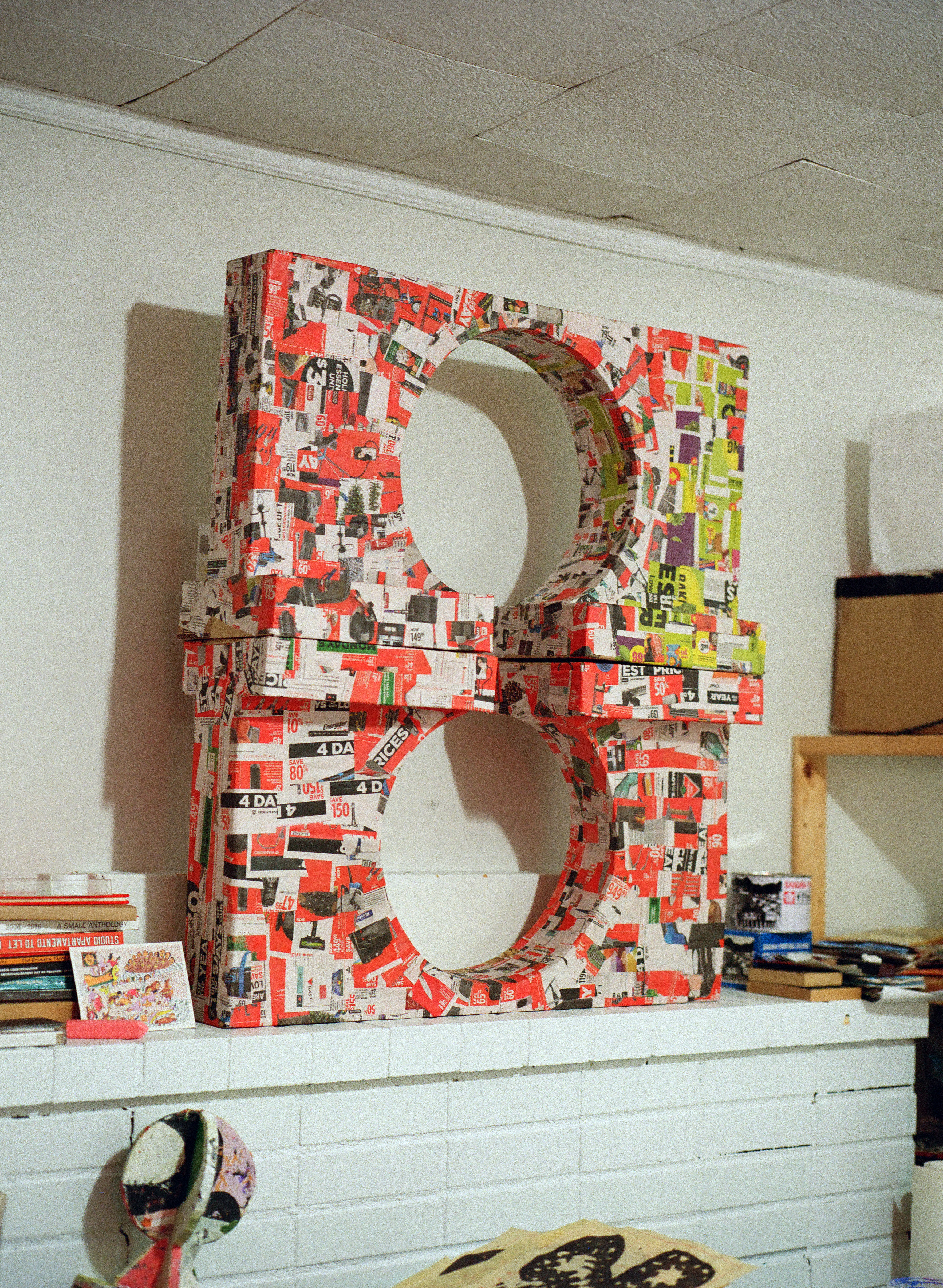
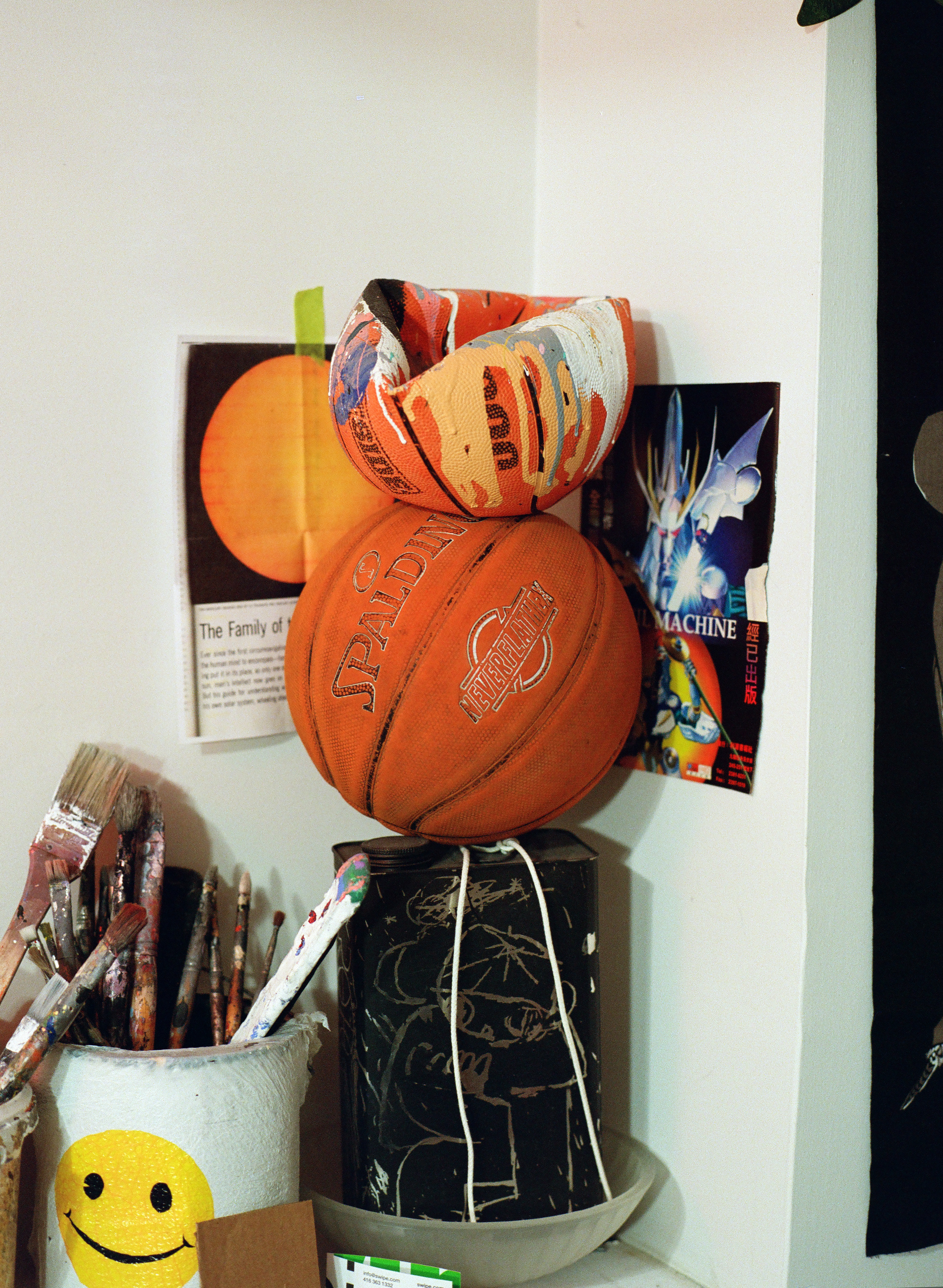
P - Is there any difference in showing work in Canada vs. abroad?
TL - It’s hard for me to say because I don’t usually make work thinking about where it’s going to be shown. I make my work and hope it’ll find the people it needs to find. I’m unsure if I even have the control to model my work in a way that would cater to a specific audience.
Although, to add to the previous question, I also consciously rebel against the notion of time equating to quality because of how Asian-ness can be generally perceived. This common perception that Asian things are fastidious, detailed, and precious, I resent it for some reason. I don’t feel the need to demonstrate that through any form of literal, aesthetic detail or methodology.
The immigrant situation also warped my perspective around time/quality validations. For a long time, my parents had to do menial work where X hours directly equaled X pay. I don’t think that’s generally something that privileged people have to think about, their value is not directly correlated to time invested in work. Seeing my family and similarly-situated families establish their lives in a new home this way (by necessity), makes me want to reject this notion completely. It’s a way of thinking that when adopted, keeps people at their station. I hate that for a person of colour or a person not born of high society, it’s not enough to just do a thing- it must be laboured.
I’m not a political artist by definition, but I think there is a bigger reason that goes beyond my person in rejecting these notions. I believe how I choose to activate my process is not just how I try to shed certain stereotypes, but also a way to propose new possibilities- if for no one else, for me first.
TL - It’s hard for me to say because I don’t usually make work thinking about where it’s going to be shown. I make my work and hope it’ll find the people it needs to find. I’m unsure if I even have the control to model my work in a way that would cater to a specific audience.
Although, to add to the previous question, I also consciously rebel against the notion of time equating to quality because of how Asian-ness can be generally perceived. This common perception that Asian things are fastidious, detailed, and precious, I resent it for some reason. I don’t feel the need to demonstrate that through any form of literal, aesthetic detail or methodology.
The immigrant situation also warped my perspective around time/quality validations. For a long time, my parents had to do menial work where X hours directly equaled X pay. I don’t think that’s generally something that privileged people have to think about, their value is not directly correlated to time invested in work. Seeing my family and similarly-situated families establish their lives in a new home this way (by necessity), makes me want to reject this notion completely. It’s a way of thinking that when adopted, keeps people at their station. I hate that for a person of colour or a person not born of high society, it’s not enough to just do a thing- it must be laboured.
I’m not a political artist by definition, but I think there is a bigger reason that goes beyond my person in rejecting these notions. I believe how I choose to activate my process is not just how I try to shed certain stereotypes, but also a way to propose new possibilities- if for no one else, for me first.


P - To go back, are some of the stylistic choices coming then from enacting rebellion through a sort of purposeful imperfection?
TL - Yeah, maybe so. I think that’s sort of what I mean by not consciously choosing a style. I’m currently in a space where I believe I can do something in the time it needs and it either hits or it doesn’t hit (and I’m ok if it doesn’t resonate). I’m not going to break my back to try to make an object of more “obvious” value. It’s just as significant to not make the painting as it is to paint it, or even to paint it, then negate it. I see a lot of tweets that say, you are not your art, or you are not the work you do. I understand that one needs to maintain a healthy distance and not to equate their value as a person by how their work is received. Ultimately though for me, the things that I make are a product of my whole being, the spirit and body from which I see and relate to all things. So much experience doesn’t fit nicely into a neat, enclosed thesis- how can I say what is or isn’t a part of me? I’m good with my work being ok and not ok too.
P - What do you feel has influenced you the most as an artist?
TL - My influences are constantly shifting. I’ve accepted and moved by the fact that you can’t beat nature as an artist. I’ve accepted and am moved by the fact that all things are transient. Lately I have been reminding myself there’s poetry in the prosaic, that is, you can find profoundness in the mundane. A painter that did that very matter-of-fact-ly for me was Philip Guston. When he shifted away from the ab-ex work, many at the time didn’t understand why he was dipping into low culture, cartoons, cars, shoes. There’s a lot of powerful truth in making meaning of the things that exist in your life by happenstance. We don’t tend to consider the everyday. The romantics are all about the sublime, a moment of indescribable clarity. I appreciate these things, but I also think you can be sitting at home and admire how much time a dust bunny takes to just exist. There are things happening in minor instances all around us that we take for granted. In that manner, Guston really resonated with me.
Also, I’m a little bit embarrassed to say the Abstract Expressionists, Gorky, and early Pollock work. I credit CoBRA (1948-1951), the European parallel to the AbEx movement, and I’m really invested in the proposals of Gutai out of Japan. One of my all-timers is Bruce Nauman and his relationship to questioning, humour, and the making tangible of things that are typically overlooked. When I think about how I’d like to approach thinking through making, I try to emulate Nauman.
![]()
TL - Yeah, maybe so. I think that’s sort of what I mean by not consciously choosing a style. I’m currently in a space where I believe I can do something in the time it needs and it either hits or it doesn’t hit (and I’m ok if it doesn’t resonate). I’m not going to break my back to try to make an object of more “obvious” value. It’s just as significant to not make the painting as it is to paint it, or even to paint it, then negate it. I see a lot of tweets that say, you are not your art, or you are not the work you do. I understand that one needs to maintain a healthy distance and not to equate their value as a person by how their work is received. Ultimately though for me, the things that I make are a product of my whole being, the spirit and body from which I see and relate to all things. So much experience doesn’t fit nicely into a neat, enclosed thesis- how can I say what is or isn’t a part of me? I’m good with my work being ok and not ok too.
P - What do you feel has influenced you the most as an artist?
TL - My influences are constantly shifting. I’ve accepted and moved by the fact that you can’t beat nature as an artist. I’ve accepted and am moved by the fact that all things are transient. Lately I have been reminding myself there’s poetry in the prosaic, that is, you can find profoundness in the mundane. A painter that did that very matter-of-fact-ly for me was Philip Guston. When he shifted away from the ab-ex work, many at the time didn’t understand why he was dipping into low culture, cartoons, cars, shoes. There’s a lot of powerful truth in making meaning of the things that exist in your life by happenstance. We don’t tend to consider the everyday. The romantics are all about the sublime, a moment of indescribable clarity. I appreciate these things, but I also think you can be sitting at home and admire how much time a dust bunny takes to just exist. There are things happening in minor instances all around us that we take for granted. In that manner, Guston really resonated with me.
Also, I’m a little bit embarrassed to say the Abstract Expressionists, Gorky, and early Pollock work. I credit CoBRA (1948-1951), the European parallel to the AbEx movement, and I’m really invested in the proposals of Gutai out of Japan. One of my all-timers is Bruce Nauman and his relationship to questioning, humour, and the making tangible of things that are typically overlooked. When I think about how I’d like to approach thinking through making, I try to emulate Nauman.
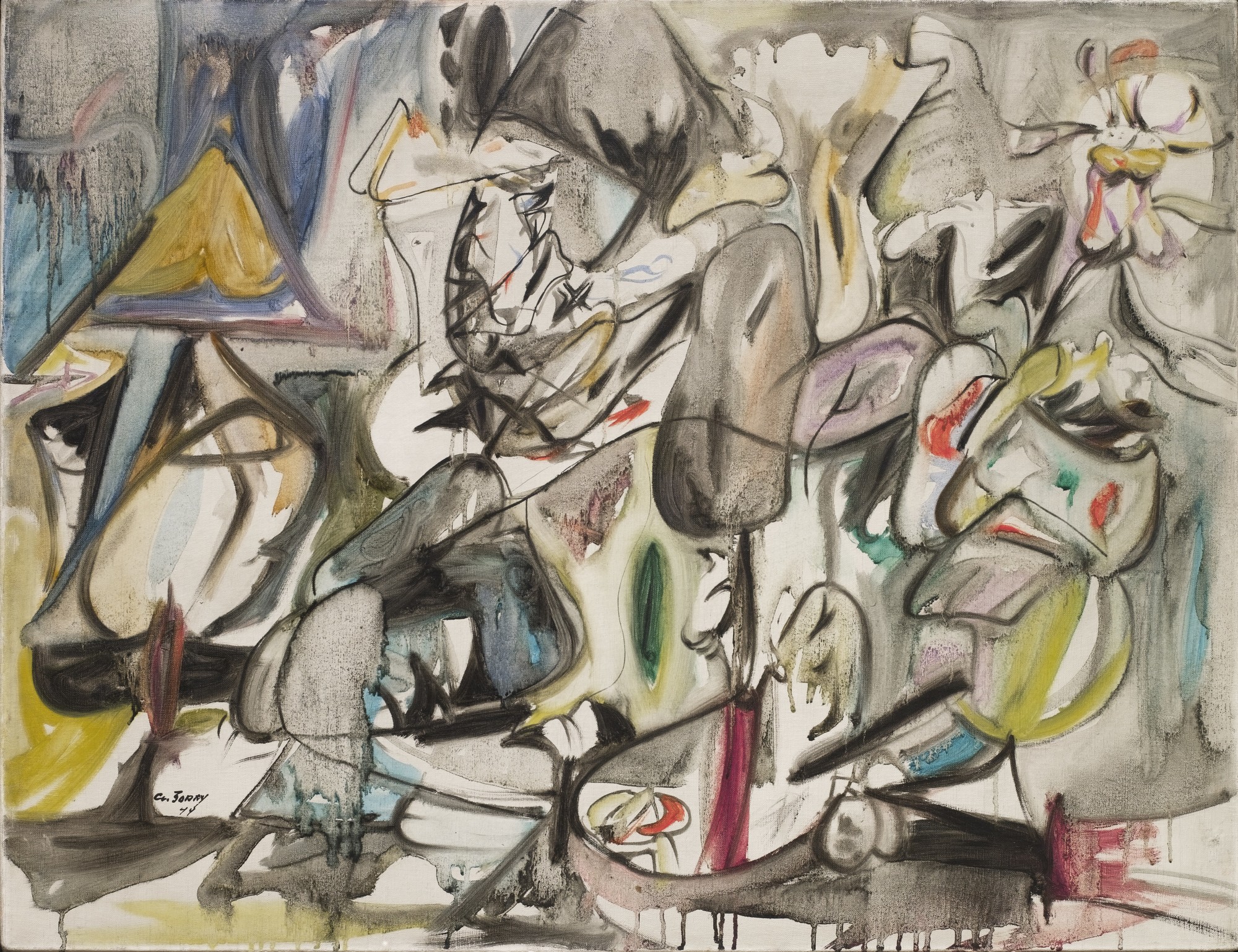
The Leaf of the Artichoke Is an Owl, Arshile Gorky, 1944
P - Can you give me more insight into the Rational Neographics series and how that came to be?
TL - Although they’re called Rational Neographics, I don’t exactly know why I did them. I found a bunch of old National Geographics at my parents’ house and I was interested in working off of an existing image. There’s no particular conceptual bearing to it but I was interested in the cover image and the cultural associations of the iconic yellow border. At the time I was doing drawings that were trying to understand the relationship and coexistence of chaos and harmony. I was thinking about how nature on the surface seems organic, but at the microscopic level there are all these laws, things like honeycomb structures, or the Fibonacci sequence. I was trying to make drawings that embodied a set of rules and proportions, but still appeared as wild or free. In working with these old National Geographics, I also started to deeply appreciate how they casually carried so much history, anthropology, nature, and learning within their pages.
P - So they’re a reaction to the existing cover content?
TL - In some ways yeah, and I think on a more basic level, it’s this preexisting thing that I’m participating with. It also includes the weight of the entire issue of information that comes with it. I’m still not sure what that means in thinking of them as art objects. There’s just something about that interaction, as if the object existed outside of me, before me, and then I’m participating with it and transforming it into something else. Then perhaps it continues to exist after me?
P - What are you working on now? Where can we see your work next?
TL - I’m spending some time with some limited materials right now. I’m curious about what can happen if I stick to ink and paper as foundations. There’s nothing concretely planned for the immediate future, but you can see my work in this great ethereal space that’s ever-present and ever-new called The Internet Gallery.
See more of Tessar’s work on his Website, and keep up with him on Instagram.
www.tessarlo.com
@tessarlo
TL - Although they’re called Rational Neographics, I don’t exactly know why I did them. I found a bunch of old National Geographics at my parents’ house and I was interested in working off of an existing image. There’s no particular conceptual bearing to it but I was interested in the cover image and the cultural associations of the iconic yellow border. At the time I was doing drawings that were trying to understand the relationship and coexistence of chaos and harmony. I was thinking about how nature on the surface seems organic, but at the microscopic level there are all these laws, things like honeycomb structures, or the Fibonacci sequence. I was trying to make drawings that embodied a set of rules and proportions, but still appeared as wild or free. In working with these old National Geographics, I also started to deeply appreciate how they casually carried so much history, anthropology, nature, and learning within their pages.
P - So they’re a reaction to the existing cover content?
TL - In some ways yeah, and I think on a more basic level, it’s this preexisting thing that I’m participating with. It also includes the weight of the entire issue of information that comes with it. I’m still not sure what that means in thinking of them as art objects. There’s just something about that interaction, as if the object existed outside of me, before me, and then I’m participating with it and transforming it into something else. Then perhaps it continues to exist after me?
P - What are you working on now? Where can we see your work next?
TL - I’m spending some time with some limited materials right now. I’m curious about what can happen if I stick to ink and paper as foundations. There’s nothing concretely planned for the immediate future, but you can see my work in this great ethereal space that’s ever-present and ever-new called The Internet Gallery.
See more of Tessar’s work on his Website, and keep up with him on Instagram.
www.tessarlo.com
@tessarlo
Various selects from Rational Neographics Series, Tessar Lo, 2021 ︎︎︎
